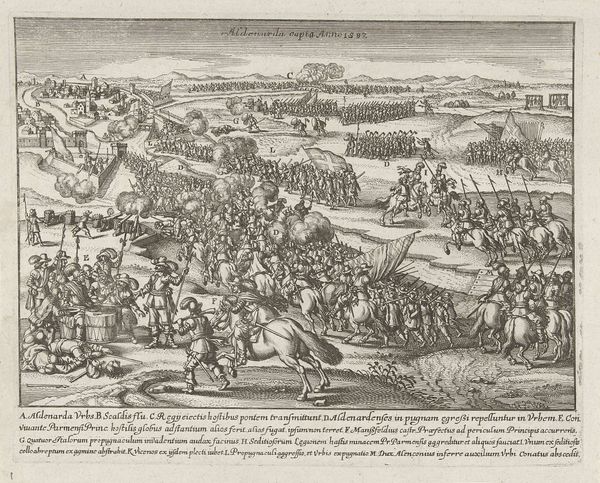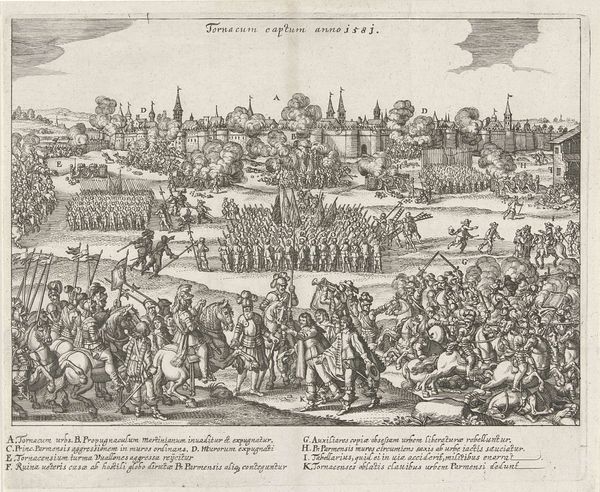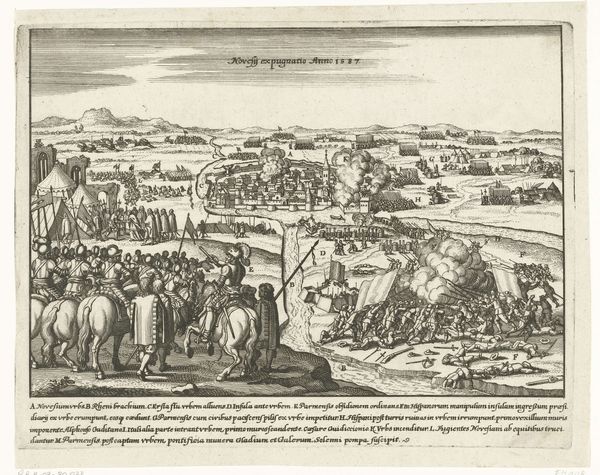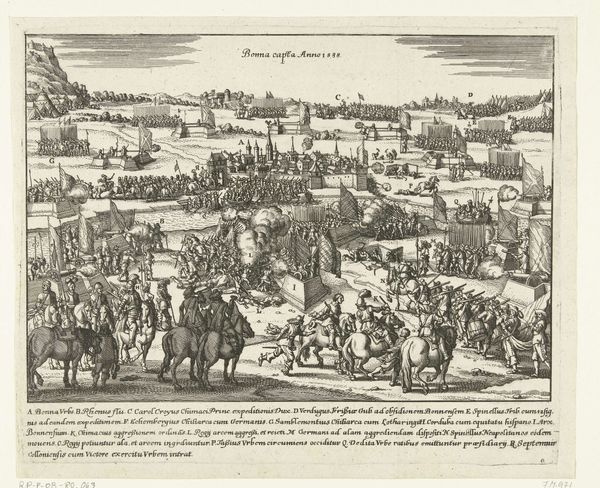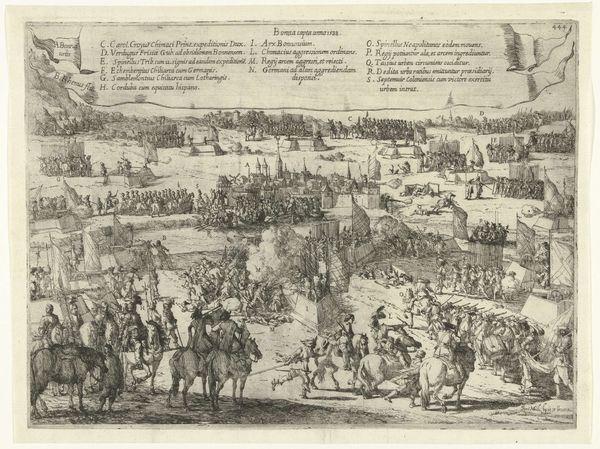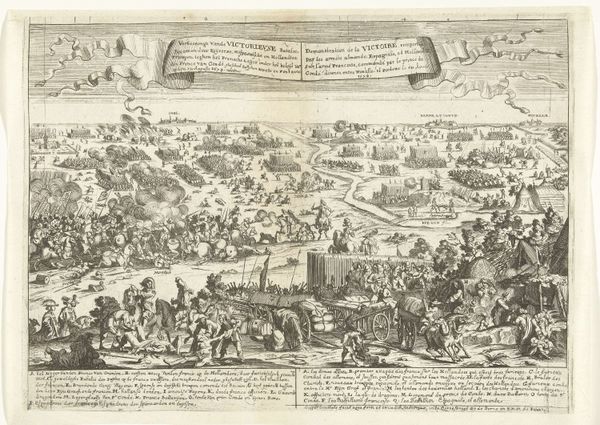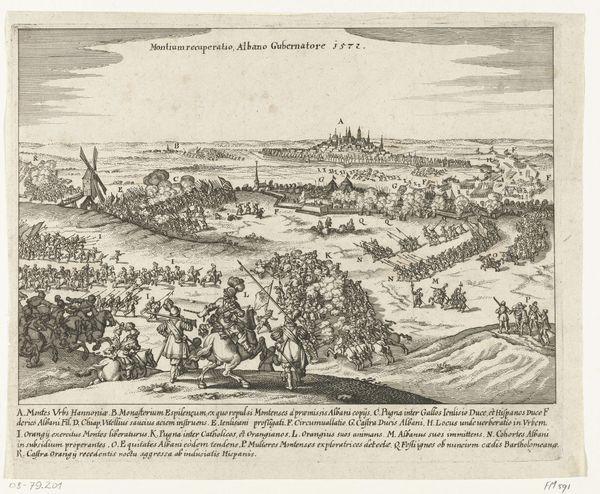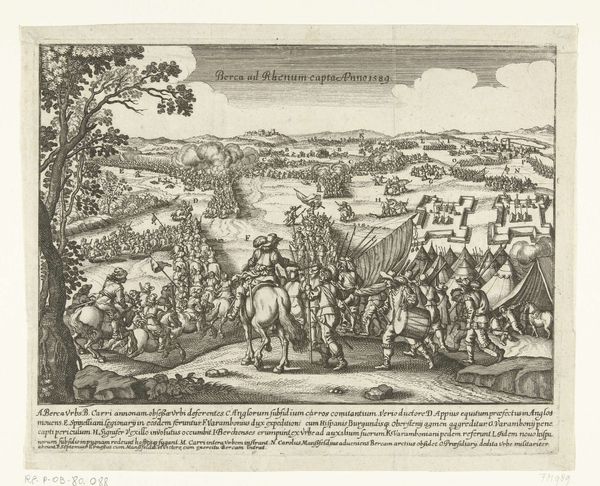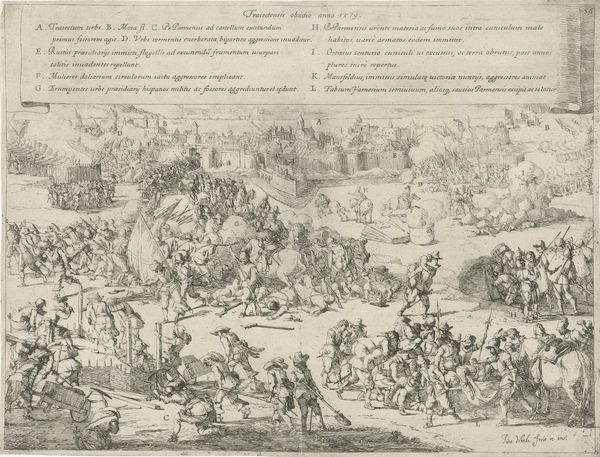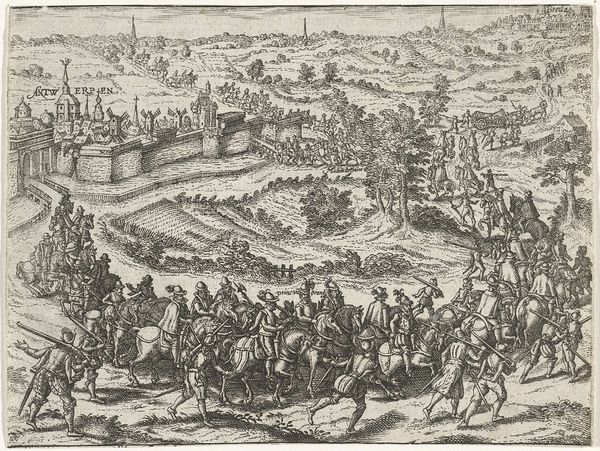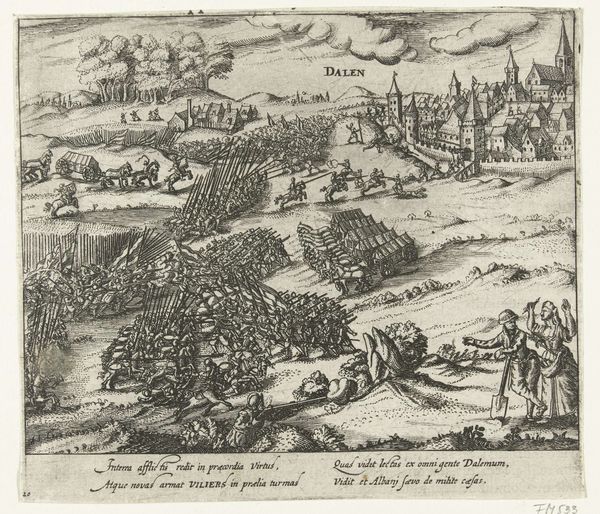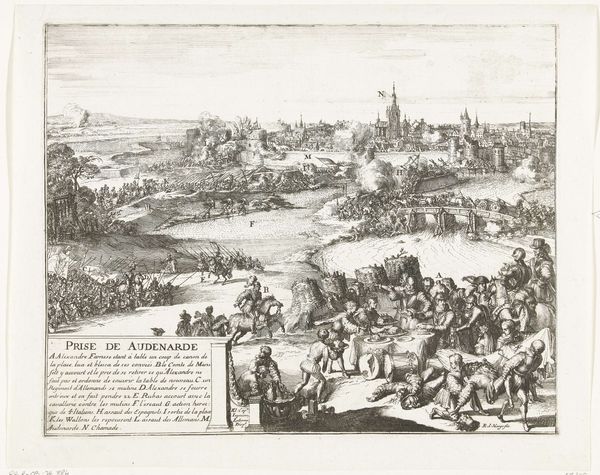
print, engraving
#
baroque
# print
#
landscape
#
cityscape
#
history-painting
#
engraving
Dimensions: height 218 mm, width 278 mm
Copyright: Rijks Museum: Open Domain
Curator: This print, held here at the Rijksmuseum, depicts the Siege of Maastricht in 1579. While unsigned, the engraving dates from 1649 to 1651. It’s a fascinating visual record of a pivotal historical event. Editor: My first impression is one of controlled chaos. There's incredible detail crammed into this composition. The contrast between the crowded foreground, filled with figures in the throes of battle, and the somewhat serene cityscape in the background is really striking. It feels both immediate and distant. Curator: Indeed. The cityscape provides crucial context. It places the viewer in relation to Maastricht, showing its fortifications, its position on the river, and indicating its importance as a strategic location during the Dutch Revolt. The scene reflects the complex military engineering of the era; sieges were almost mathematical exercises. Editor: Absolutely. And you see the human cost within that "mathematical exercise". These sieges weren't just about strategy, they were sites of intense suffering, of civilian populations caught between warring factions. Do you see, along the bottom, the Latin text describing all the elements, A, B, C? The artist made certain not to romanticize war, portraying not heroism, but instead relentless aggression, weighed against the residents’ struggle for the city’s defense. Curator: And those textual annotations are fascinating, particularly for understanding the perspectives presented. While historical depictions of battles can be somewhat detached, there is no clear ‘hero’ narrative at play here. We’re observing a specific historical event, but from a distance that lacks emotional bias, beyond the realities of war. Editor: Perhaps, but it seems to invite viewers to confront uncomfortable realities. It serves not just as a historical document, but also as a commentary on the brutal realities of conflict. In modern contexts, it urges dialogue about conflict, memory, and collective trauma by focusing our gaze on the struggles of populations impacted by conflict. Curator: It's thought-provoking to consider its role then and its resonancy now. This print invites us to look at war not through the lens of heroic victory, but rather through the arduous details of attrition and suffering on both sides of conflict. Editor: Agreed. What started as what seems at first viewing a detailed but conventional battle depiction reveals itself as something that encourages critical awareness of what it meant—and means—to be on either side of siege.
Comments
No comments
Be the first to comment and join the conversation on the ultimate creative platform.

